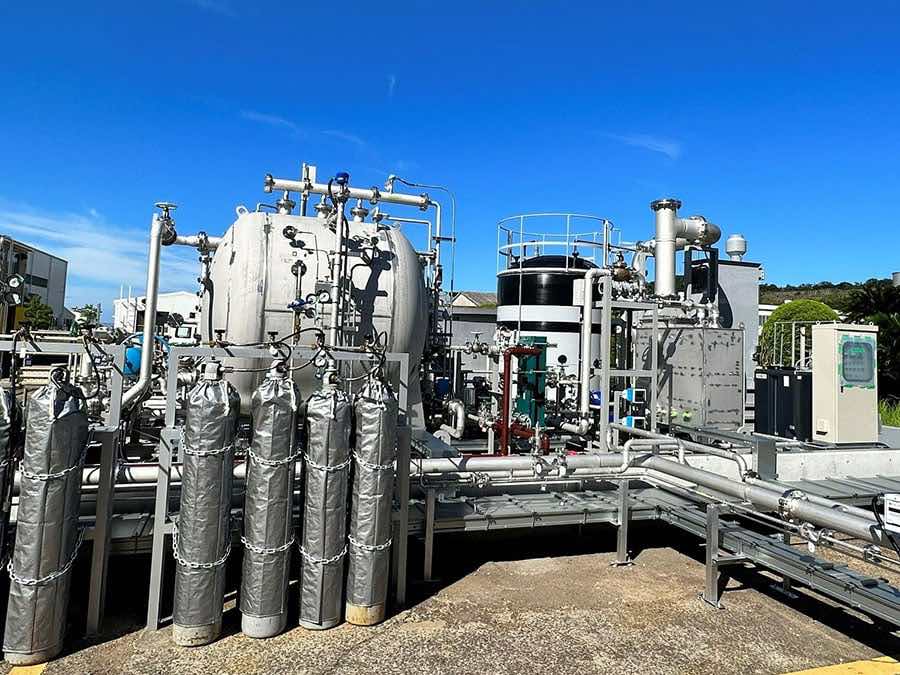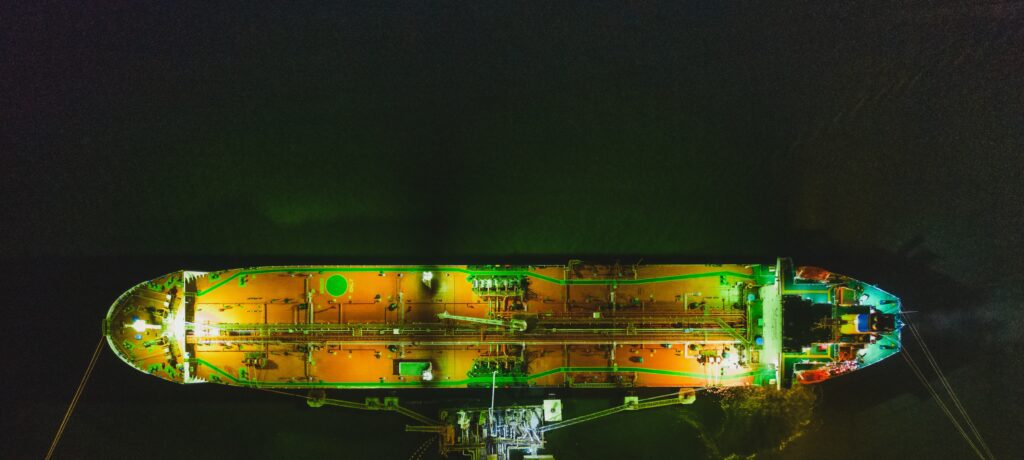28 November 2024
MHI Testing New Ammonia Handling System for Ships

MHI completed a demonstration facility to safely process surplus ammonia from ammonia-fueled vessels. Thus, testing has begun to support the market launch of MAmmoSS®, an ammonia handling system package comprising a fuel supply system and peripheral equipment.
Concept
Mitsubishi Shipbuilding Co., Ltd., a part of Mitsubishi Heavy Industries (MHI) Group, is currently developing the Mitsubishi Ammonia Supply and Safety System (MAmmoSS®), an ammonia handling system to support the utilization of ammonia as marine fuel, which is attracting attention as a means of significantly reducing greenhouse gas (GHG) emissions from ships. As part of this development project, Mitsubishi Shipbuilding has begun demonstration testing of the Ammonia Gas Abatement System (AGAS), a subsystem of MAmmoSS® to safely treat surplus ammonia.

Direct Ammonia Fuel Cell (DAFC) with up to 67% efficiency
Alma is developing modularized SOFC systems, the company’s direct ammonia fuel cell (DAFC), delivers an electrical efficiency of 61-67%.
Ship Nerd
Using the AGAS demonstration facility at the Nagasaki District MHI Research & Innovation Center, Mitsubishi Shipbuilding will conduct demonstration tests of the processing performance under various scenarios simulating onboard ammonia handling system operations and as well as explore broadening the range of maritime industry through collaboration with related equipment manufacturers, developed ammonia related technology will be applied for various industries to support its safe handling.
Ammonia Handling System
MammoSS® comprises several subsystems in addition to AGAS, including a high-pressure/low-pressure ammonia fuel supply system (AFSS) and an ammonia fuel tank system. A key feature of the ammonia handling system, MAmmoSS® is that each of these subsystems can be modularized, allowing Mitsubishi Shipbuilding to provide the optimal modular configuration in a package for onboard plants consisting of multiple engines and boilers.
Going forward, Mitsubishi Shipbuilding, aligning with MHI Group’s strategy for the advancement of the energy transition, will bring together its technologies and expertise in ammonia handling accumulated through its history of building transport carriers, and as a shipboard ammonia handling systems manufacturer, supply products with an emphasis on safety and reliability. Further, as a maritime system integrator, Mitsubishi Shipbuilding will contribute to the further development of marine logistics and the reduction of its environmental impact on a global scale by providing shipbuilding engineering services for ammonia-fueled vessels, along with construction support and other services to meet customer needs.
Source: Mitsubishi
See Also
Nowadays, the existing and upcoming regulations apply particular pressure on ship owners and operators to minimize their environmental footprint. MARPOL Convention has set to Limit the following emissions.
- Ozone-Depleting Substances (ODS)
- Sulfur Oxides (SOx)
- Nitrogen Oxides (NOx)
- Carbon Oxides (COx, GHG)
Hence, there are various solutions in the market to assist in the decarbonization effort.
In the process of scheme selection, many factors need to be considered, such as; initial investment, construction cost, operation cost, maintenance cost, loss of cargo space, the convenience of operation and maintenance, emission reduction effect, etc. detailed calculation is needed to compare the results of various schemes. In addition, there are some factors that are difficult to predict at present, such as the convenience of fuel filling and the change of fuel price.
The dual-fuel propulsion and liquefied gas supply system are attractive methods. They can reduce emissions, raise fuel efficiency and power density while maintaining an economical operation.
The possibility to seamlessly transition from gas to diesel operation and vice versa ensures full flexibility in terms of costs and emissions.

Fuel Gas Supply System (FGSS) – How it works
Everything you need to know about a Fuel Gas Supply System (FGSS): What? Why? How it works? Components and Design


